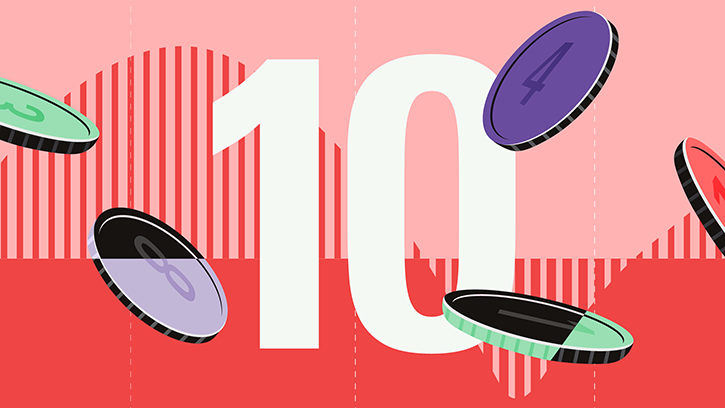Morningstar's "Perspectives" series features investment insights from third-party contributors. Here, Colin Moore, Global CIO at Columbia Threadneedle, explains why fear of volatility is bad for investment growth.
In today’s low growth, higher volatility world, the emphasis is shifting from maximisation of returns to consistency of returns. Holding long-term savings in cash to avoid volatility, the financial equivalent of hiding under the sheets, is detrimental to achieving long-term goals.

The reality is that there is little opportunity for return without volatility

According to Wikipedia, “The bogeyman is a common allusion to a mythical creature in many cultures used to control behaviour. This monster has no specific appearance, and conceptions about it can vary drastically from household to household within the same community; in many cases he has no set appearance in the mind of an adult or child, but is simply a non-specific embodiment of terror.” Different cultures have different names and physical representations for the bogeyman, and investors are no different. We have terrible monsters that we fear may destroy our portfolios, and we call one of the scariest of them volatility.
While the bogeyman is mythical, volatility is real and can cause serious damage. To understand why investors have such a hard time coping with volatility, we first need to define three cognitive biases at work in today’s investment environment:
1. Recency bias – something that has recently come to the forefront of our attention, regardless of how long established it is, suddenly seems to appear with improbable frequency
2. Negativity bias – we tend to have greater recall of unpleasant memories than positive memories
3. Loss aversion – our dissatisfaction with losing money tends to be greater than our satisfaction with making money
The level of volatility varies dramatically, and so does investor fear and panic selling — waxing when volatility rises, waning when it falls
Panic Selling Crystallises Losses
Recent studies have pointed to demographics as an important driver of panic selling. As people get closer to retirement, the prospects of a large; 20%–30%, loss in financial assets can have a much more pronounced effect on their sense of well-being. Wealth preservation instincts kick in much more quickly than for younger, and typically less wealthy, savers.
The reality is that there is little opportunity for return without volatility. Therefore, the bogeyman effect of holding long-term savings in cash to avoid volatility, the financial equivalent of hiding under the sheets, is detrimental to achieving long-term goals. This effect tends to be more pronounced during the episodic spikes in volatility.
The spike in volatility in 2008 and 2009 led to significant withdrawals from long-term investment funds over the same period. Less pronounced effects can also be seen when comparing 2001–2003 and 2011–2012. Conversely, flows picked up when volatility returned to “normal” levels. Investor behaviour of this type is consistent with the three behavioural biases.

I believe average volatility will be higher over the next 10 years than the last 10 years and episodic spikes will increase in frequency because sustainable economic growth will be structurally lower and geopolitical risk higher than any time since World War II. Low growth creates uncertainty while loss aversion will make investors fear that we are one economic mishap or geopolitical event away from no growth or recession. Negativity bias will tend to exacerbate “spike” reactions to event-driven geopolitical news, and the volatility bogeyman will appear more often. Assuming behavioural biases continue, investor returns are likely to be very disappointing regardless of the total return generated by markets due to the bogeyman effect.
How to Invest in a Highly Volatile Market
To mitigate this effect, we need to focus on portfolio construction and an improved understanding of diversification. I accept that equities are likely to offer the highest return over the next 10 years, but they also offer the highest volatility. Many portfolio construction optimisation tools use historical average volatility, which is likely to underestimate the volatility investors will face. The bogeyman emerges when individual asset class volatility spikes and cross-correlations rise, the combination of which increases overall portfolio volatility far beyond expectation.
Diversification is meant to protect investors against volatility, but what’s the point of owning lots of investments if the volatility bogeyman has not been properly estimated? The Sortino ratio, which differentiates spike volatility from general volatility, needs to be used more. Most importantly, portfolios should be constructed to properly represent the behavioural risk/return trade-off of investors, remembering that they won’t stay invested to realize the return if we get the risk tolerance wrong.
In a low growth, higher volatility world, the emphasis is shifting to return consistency rather than return maximisation. Even though it's a permanent feature of financial markets, volatility is less likely to be the bogeyman we all fear if portfolios are constructed with this understanding.
Disclaimer
The views contained herein are those of the author(s) and not necessarily those of Morningstar. If you are interested in Morningstar featuring your content on our website, please email submissions to UKEditorial@morningstar.com




























